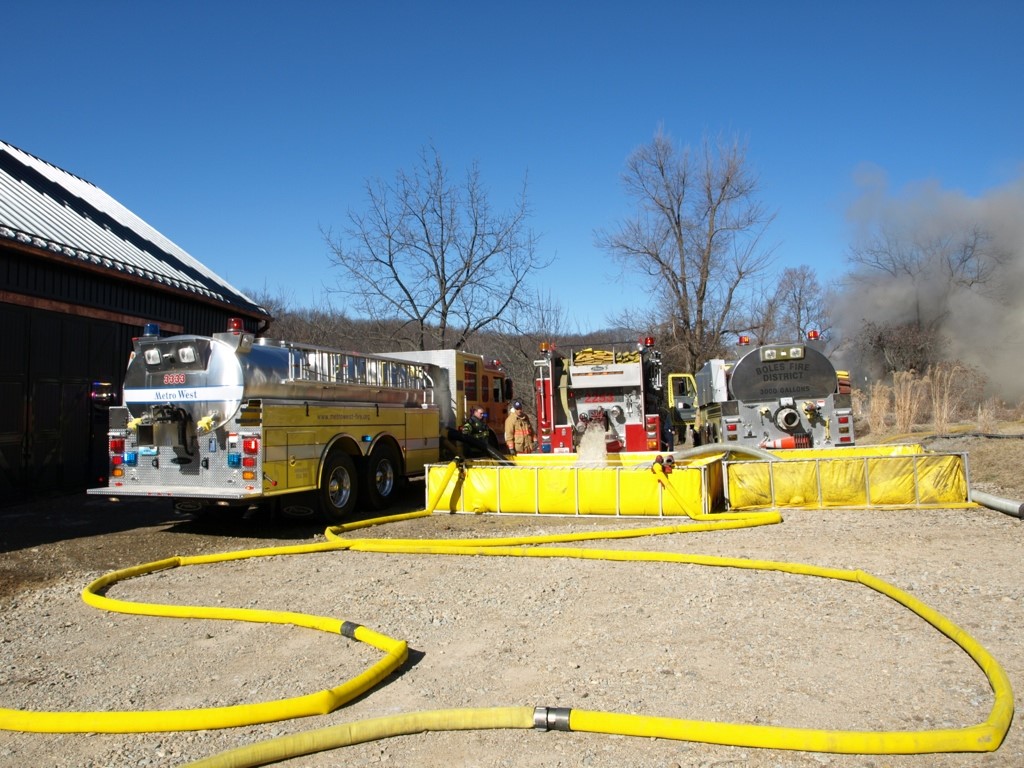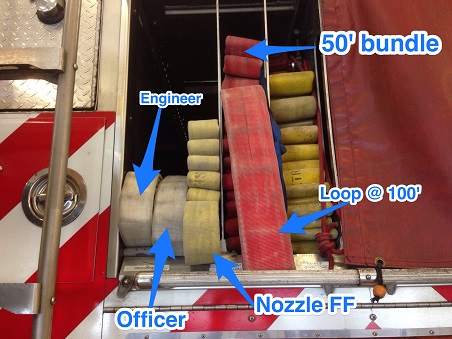
By Brian Zaitz
We all wish we had four and five firefighters on our apparatus; however, the reality is that if we are lucky, if we can muster two and three. These short-staff situations require critical decision-making for the appropriate determination of a safe, effective strategy.
When short staffed, size-up is the key to fireground success. Everyone knows the importance of size-up, which paints the picture for incoming units and clearly defines the actions of the first-arriving unit and the needs for incoming equipment. In the size-up, units must be aware of critical factors such as water supply, construction, resources en route and available, as well as their own situation. After evaluating these along with other factors, you can determine strategy and implement the appropriate tactics.
RELATED FIREFIGHTER TRAINING
First-Due Tactics for the Urban Engine Boss
Leveraging Your First-Arriving Resources
Five Tips on Short Staffing in Rural Departments
Suburban Fire Tactics: Developing Functional SOGs
Water Supply
As stated above, the importance of water supply cannot be overstated, the ability to secure a reliable, sufficient, sustainable water supply is key to a safe fireground. This is not a major concern in areas readily sprinkled with hydrants; however, many times, in these short-staffed situations, we also find that the water supply becomes an issue and necessitates tanker shuttle operations, drafting from a static water source, or the use of portable pumps, or even fire boats, to supply fireground operations (photo 1). When these situations arise, it is necessary to recognize the magnitude of the operation and the need for additional resources. Water supply issues or the lack of a water supply must be a factor in determining strategy and deploying resources and operations on the fireground.

(1) Photos by author.
Construction
Construction is another key factor. We all know the hazards of lightweight construction and the collapse potential. This is no different in short-staff situations; however, time is a key factor. Burn or involvement time will play into the decision of whether to use offensive or defensive strategies—again, the risk-benefit analysis for determining strategy (photo 2). Today’s lightweight construction fails faster than traditional conventional construction. Lightweight members are now found in floor joists, stair risers, and roof construction: Essentially, anything that can be made with less material and structurally stronger it will be. The key here is to remember that although the members are in fact structurally strong, the system is weak under fire conditions.

(2)
Resources
Once a strategy has been determined, tactical and human resources must be deployed to complete the assignment. When deploying resources and determining strategy, it is significant to note what resources are en route and what are available. We would all love to work in the tabletop land of unlimited resources and equipment; however, we recognize that that unrealistic. While en route, we must be actively listening to the radio or monitoring the mobile data terminal to see what equipment has responded and with what personnel if possible. It may be necessary to request additional equipment and call mutual aid, especially in volunteer settings when our district’s assets are stressed and additional personnel or equipment is needed. The key is to quickly identify the type of resources and quantity needed and request them early.
Training
Whenever making a decision look at your situation–the skills and abilities of the crew, the strengths and limitations of the apparatus, and the forecasting of the fire. Understand the abilities of your crews; do not place them in situations beyond their skill levels. We understand that crews will begin to take action once they arrive on the fireground. This is our expectation, but we must prepare them appropriately. We understand that these actions will be based off their training, experiences and predetermined assignments such as riding assignments (photo 3) and standard operating procedures (SOPs). If prior trainings and SOPs do not match actual situations, expect that crews will be unsuccessful and potentially unsafe. When training, practice in real-life scenarios, such as having one firefighter instead of four firefighters deploy a hoseline. Again, if we practice for likely scenarios, they will be the norm and we will be ready for attack (photo 4) when we encounter them.


(3-4)
Apparatus is often not a consideration; however, this could not be further from reality. Today’s apparatus are highly technical, complex machines with numerous capabilities. In addition, many of today’s apparatus are cross-equipped; the rescue-engine, quint, and the pumper-tanker, a just a few examples. When arriving on one of these apparatus, especially with a short-staffed crew, it is important to recognize how the apparatus affect our tactics and decision-making. For example, when arriving on a quint and first due, the likelihood is that the crew will function as an engine company; however, the apparatus, especially if it is the only aerial device on scene, should be positioned to function in such a capacity. The fireground is not the time or place to figure how to make this happen, especially when short staffed.
Do not think that short-staffed companies are not aggressive and cannot go offensive; that is not the case at all. Offensive attack is still appropriate for many situations, and the tactics are similar; however, when facing the short-staffed situation, crews must be fully aware of the risk and limitations of personnel prior to overcommitting. Many times, offensive is thought to pull a handline, go interior, and extinguish the fire. This is an example—not the definition. Another offensive action might be vent-enter-isolate-search (VEIS). Although this is not traditionally thought of as an offensive attack, it is an offensive action and a great tactic for the short-staffed company. The key is to match tactics with on scene/en route staffing, equipment, and the ability to safely perform the chosen tactic.
Short-staffed situations are the reality for many of us. How we prepare, practice, and deploy our resources will determine our success on the fireground.
Brian Zaitz is a 13-year student of the fire service and is assigned as the captain-training officer with the Metro West Fire Protection District. He has a Master’s of Science degree in human resource development, a Bachelor’s of Science degree in fire science management, and an Associate of Science degree in paramedic technology. He is an instructor at the St. Louis County Fire Academy as well as safety officer with the Federal Emergency Management Agency USAR team MO-TF1. He has several certifications, including accreditation as chief training officer.
Originally ran August 9, 2016.

